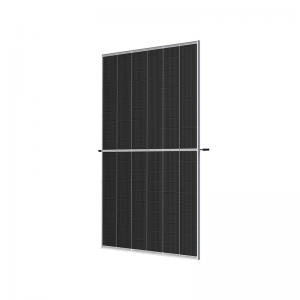-

Solar Panel Glacier Series
Solar modules, also known as solar panels, are made up of several photovoltaic (PV) cells that capture the sun’s energy and convert it into electricity. These cells are typically made of silicon or other semiconducting materials, and they work by absorbing photons from sunlight, which releases electrons and creates an electrical current. The electricity generated by solar modules is a form of direct current (DC), which can be converted into alternating current (AC) using inverters so that it can be used in homes and businesses.
The efficiency of solar modules varies depending on several factors, including the type of PV cells used, the size and orientation of the panel, and how much sunlight is available. In general, solar panels are most efficient when they are installed in areas with maximum sun exposure and minimal shading.
Solar modules are typically installed on rooftops or in large arrays on the ground, and they can be connected in series to produce higher voltage and wattage outputs. They are also used in off-grid applications, such as powering remote homes or water pumps, and in portable devices such as solar-powered chargers.
